What actually is Paella?Well, probably most Malaysians not often heard of this name....
And how does it pronounce anyway?
It's called the...
pa·el·la (pä-ā'lyä, -ā'yä)
noun
A saffron-flavored Spanish dish made with varying combinations of rice, vegetables, meat, chicken, and seafood.
Oxford's explanation
Paella is a...
Spanish (Valencian) rice dish, seasoned with saffron, containing sea-food and chicken.
Wikipedia explains...
Paella (pronounced in Spanish IPA: [pa'eʎa]) is a rice dish, originally from Valencia (Spain) where it is traditionally eaten on Sundays.
The name paella is the word for "frying pan" in Valencian (from Latin patella).
Paella is usually garnished with vegetables and meat or seafood. The three main ingredients are rice, saffron, and olive oil.
There is an old story of how the Moorish kings’ servants created rice dishes by mixing the left-overs from royal banquets in large pots to take home. It is said by some that that word paella originates from the Arab word “baqiyah” meaning left-overs.
History of Paella
The original paella was a poor man's fare, which is why it is made with a little of everything a person may have on hand in the kitchen. "Paella" is the name for frying pan in Valencian, although as popularity for this dish spread throughout Spain, the pan has come be known as the paellera.
Paella is a typical dish from the Valencia Region. This recipe is for the traditional paella Valenciana, which is where the dish was first created. But many different varieties of paella are enjoyed; for example, in some regions of Valencia paella is cooked using more seafood such as shrimp, mussels and clams.
Ingredients
-500g (1 lb.) chicken
-500g (1 lb.) rabbit
-480g (1 lb.) medium grain rice
-350g (3/4 lb.) paella vegetables (big haricot beans "garrofó", small haricot beans "tavella", green beans "bajoqueta (de ferraura)"/"judías verdes", red peppers and green peppers optional)
-24 snails (optional)
-120g (1/4 lb.) tomatoes
-1.5 L (4 cups) of water
olive oil, salt, paprika ("pebre roig"/"pimentón dulce"), saffron, rosemary.
Procedure
Clean the snails, chicken and rabbit thoroughly. Cut the chicken and the rabbit in small pieces and salt them generously. Pour olive oil in a paellera and, when hot, quickly stir-fry the chicken and the rabbit pieces. When they have browned, add the tomato and stir-fry until well cooked, then add the vegetables and stir-fry til they reduce. Add a pinch of paprika and stir-fry for one or two minutes.
Before the paprika gets burnt, pour the water into the paella (you might find it best to pre-boil the water first). Add saffron and salt to taste. (If you've never used saffron before, start with a pinch, about 10 threads.)
Add the snails if you are using them. Bring everything to a rolling boil and let it bubble for about 10 minutes. Correct for the evaporation of the water by adding a little extra water as needed.
Add the rice and stir. Spread the rice over the pan (it should be less than 1 cm thick) and let it simmer on medium heat for 10 minutes, and then reduce the heat to low and let simmer gently for a further 10 minutes.
When the rice is almost dry, remove pan from the heat, place some small branches of rosemary over the rising rice, and let the rice absorb the remaining liquid. Cover with cloth or sheets of newspaper for about 10 minutes. Once the rice is dry the paella is ready to be served.
Paella not just a good dish but it has got its own tradition...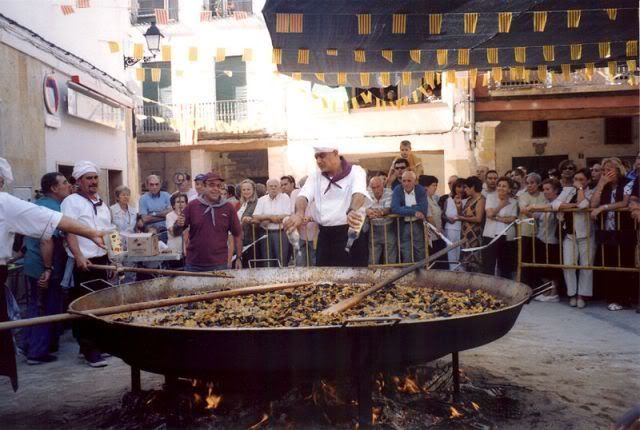
A giant seafood Paella cooked on the Catalonian National Day 2003 in the village square of Cornudella de Montsant, Catalonia, Spain.
Related paella traditions
A giant seafood Paella cooked on the Catalonian National Day 2003 in the village square of Cornudella de Montsant, Catalonia, Spain.
It has become a custom for mass gatherings in Valencia — festivals, political campaigns, protests, etc — to prepare an enormous paella, sometimes to win a mention in the Guinness Book of Records. Ad hoc wide-diameter pans are commissioned for these cases.
Paella and its variations are typical picnic dishes for the Spanish spring and summer.
The dish is also typically consumed during the Falles in Valencia.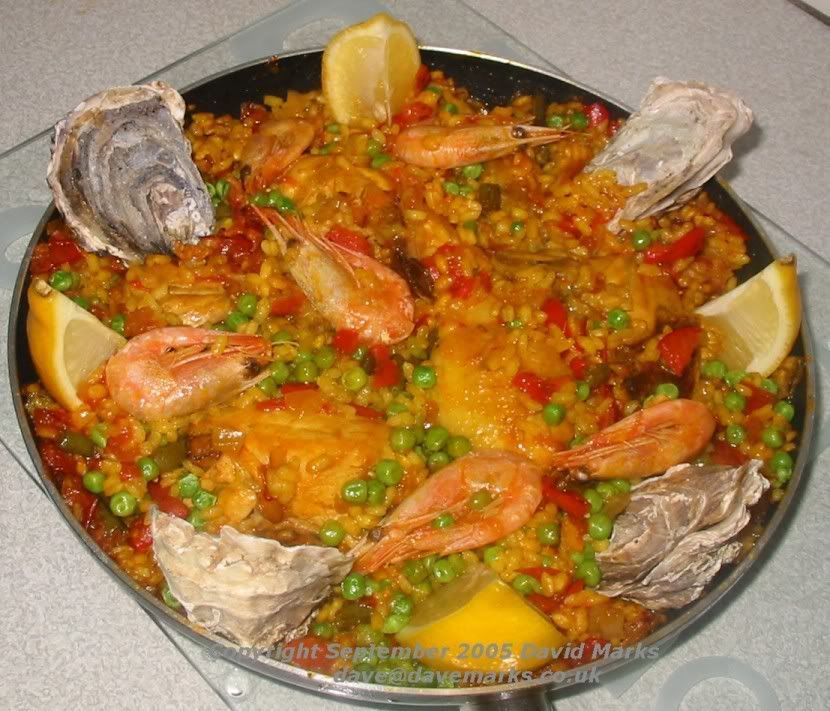
Prawns!Green peas!!Chicken!!Oyster!!Cheese!! and Much Much more!!Yum!!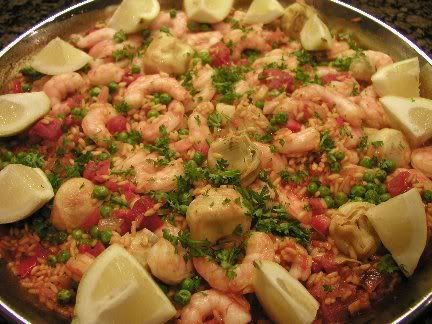
Now...that's really attractive...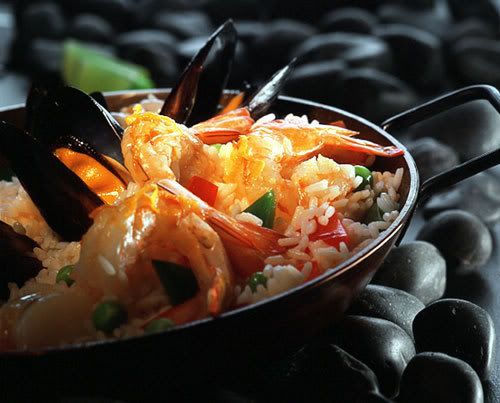
Seafood Paella!!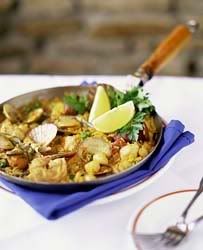
Small Paella!!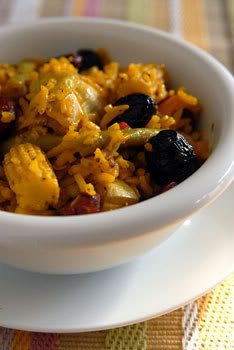
Vegilicious!!
Paella?What's that?
- Wednesday, November 7, 2007
Subscribe to:
Post Comments (Atom)






3 comments:
500G of lebbit ar?...ehh...sure good to eat or not ar?...
YOON KHEE I LOVE YOUR BLOG.
SO MUCH FOOD. yum yum yum. =]
I'm kar yoke btw.
Too bad you didn't join us in the Class trip. I ate so much ice cream and donuts and cinammon rolls and muffins too! Starbucks muffins!
*double cheers* =D
hi there~ i first time visit your blog. and it already made me feel hungry. lol. all food. interesting. haha. food are girls' enemies. Must resist the temptation!!
Post a Comment